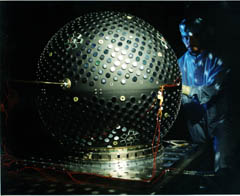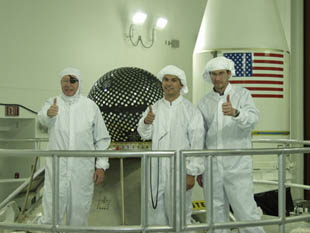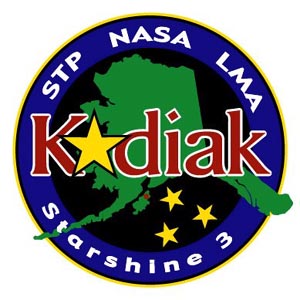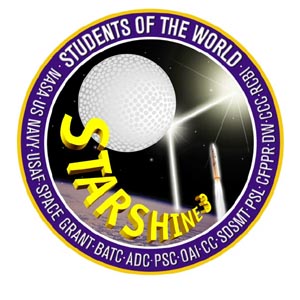Starshine 3 Update - October 30, 2001 (10:32UT)
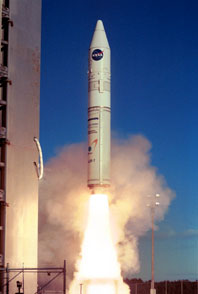 Photo by Lockheed Martin Astronautics |
WE NEED YOUR HELP TO MEASURE STARSHINE 3's MIRROR FLASH RATE Starshine 3 Visual Sighting Reports, News stories and Video The Kodiak Star mission lifted off into beautiful blue skies, after a flawless countdown, from the Kodiak Launch Complex, Alaska, at 6:40 P.M. Alaska Daylight Time September 29, 2001 (02:40 GMT on September 30, 2001). According to Gil Moore, Project Director, "We have been deployed and we are operating! A new international educational satellite called Starshine 3 was released by NASA into the heavens tonight. Thousands of children in countries all over the world worked together to polish small aluminum mirrors that cover this satellite's surface. The entire Kodiak Star team would like to join with these children in dedicating this spacecraft to the memory of the victims of the terrorist attacks on the United States of America. Starshine 3 will be seen flickering across the stars at dawn and dusk as a lasting symbol of America's pride and its determination to work with all peace-loving nations in the pursuit of knowledge about the earth and its place in the universe."
Project Starshine in the news. |
Amateur radio operators click here for details of the Starshine 3 communication system and the way in which you can collect and relay satellite solar cell performance and spin rate data to us.
